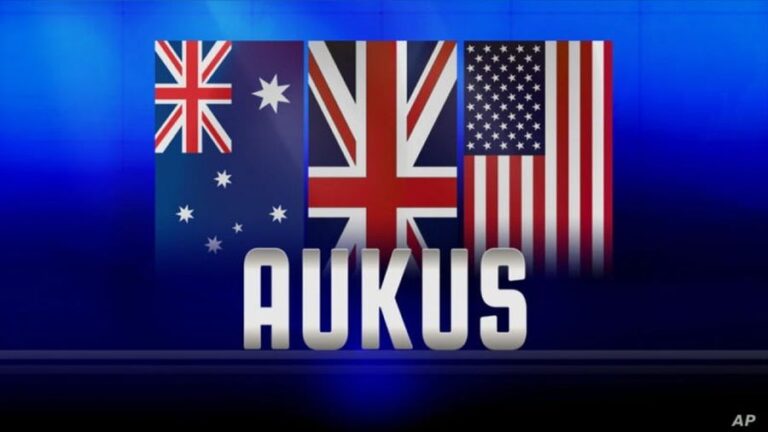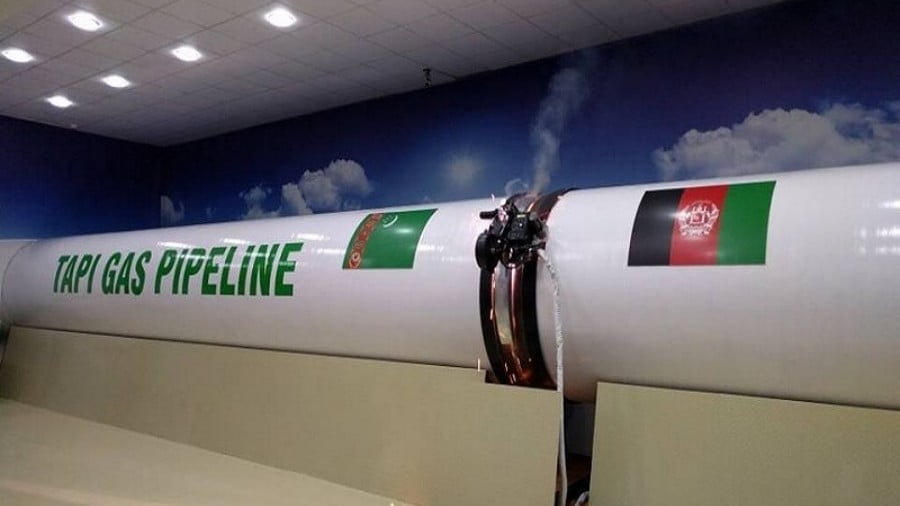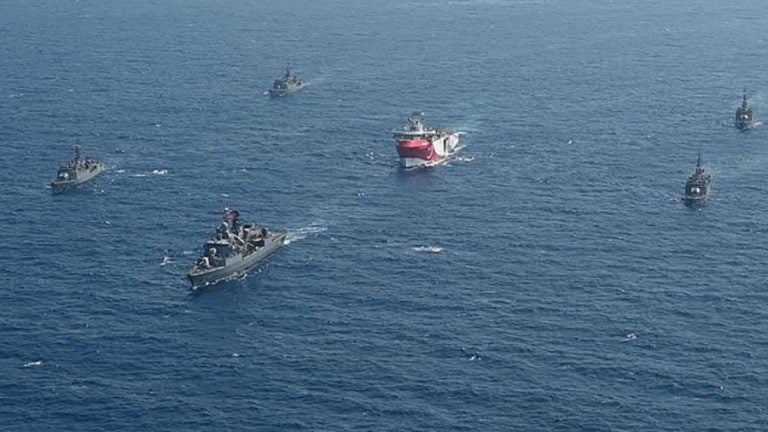Chinese Foreign Minister Wang Yi’s Tour of Pacific Ocean Nations
Chinese Foreign Minister Wang Yi’s ten-day tour of a number of countries in the Pacific Ocean, which began on May 26, has provoked considerable commotion in the camp of Beijing’s regional opponents. The words “led by the United States” would be logical, and generally speaking, corresponds to fundamental realities.
Yet, when we look at the “details,” it turns out that it is Australia that has shown itself to be the most visible and wary at this time. That is, a player on a significantly lower rung than the United States, but who, in fact, performs the duties of “overseeing the affairs” taking place in the Pacific region. Where all eight island states that Wang Yi visited in the “blitz” mode.
Canberra, not Washington, is implied as a participant in the “diplomatic duel” with Beijing, which, according to the author of this expression, resulted in everything accompanying the tour by the head of the Chinese Foreign Ministry. His opponent was the half-Chinese woman Penny Wong, who took over as Australian foreign minister after winning the May 21 general election in the center-left coalition led by the Labor Party, which she is a member of.
Australia is closely involved in all of the political, economic, military, and strategic processes taking place here. Because it is part of the main regional interstate organization, the Pacific Islands Forum (PIF). The state formations included in the PIF together create a very mixed picture. The ties between them are rather conditional, as they’re being tested for seemingly rather minor reasons. For instance, five states of Micronesia have announced their intention (still pending) to withdraw from the Pacific Islands Forum due to a disagreement with the procedure to elect the secretary general of the organization.
Australia, which has a population, economic and military power many times greater than all other PIF members combined, until recently played the role of policeman among them (often literally), backed up by the corresponding documents of this organization. That is to say that Canberra has more than once actively intervened in the process of resolving both the internal problems of PIF member countries and the turmoil between some of them. The fulfillment of this role is fully supported by “big brother” – Washington.
The process of developing relations between the PRC and some island states is being watched with increasing tension in both of these capitals. Once again, we emphasize that the success of this process has so far been almost entirely due to the benefits that the objects of “Chinese expansion” derive from the sphere of economic cooperation with the PRC. Despite for several years the words “the prospect of a Chinese military base” having been present in the comments of Western (and, above all, Australian) media when it comes to the next act of the aforementioned process. The real picture about the construction of military bases beyond one’s own national borders is quite adequately reflected in the illustration for an article on this topic in the Chinese publication Global Times.
So far, their authors have not been able to present any specific facts on the topic of the “Chinese military threat” (this time in the Pacific Ocean). Nothing is definite yet even after the sensational signing of a Framework Security Agreement at the end of March between the PRC and the Solomon Islands, that is, with one of the Pacific Island Forum’s members.
This document allows for the possibility of deploying a contingent of Chinese police and armed forces in the Solomon Islands in order to prevent frequent unrest in the country. But, we repeat, no one is surprised by Australia’s performing the functions of policeman in this region. As was the case in November 2021 in the very same Solomon Islands. Why can’t Beijing do something similar in accordance with the document signed and at the invitation of the legitimate leadership of this country?
It seems obvious that the main aim of the head of the Chinese Foreign Ministry’s latest tour to the Pacific Ocean, unprecedented in duration, number of countries visited, as well as contacts with local politicians at various levels, was to build on the success achieved in the Solomon Islands. It appeared to be a response to the series of anti-Chinese events that accompanied the visits by the American president to South Korea and Japan.
Western commentators on Wang Yi’s trip believe that a document on economic and security cooperation with the PIF as a whole should have been the central focus. The signing procedure itself was allegedly planned to be held in the capital of Fiji on the sidelines of the next meeting by the foreign ministers of the ten member countries of the organization, to which the Chinese minister was invited. According to the same sources, this did not take place due to disagreements that emerged among Wang Yi’s negotiating partners.
At the final meeting with journalists, a representative of the host country behaved very circumspectly, avoiding any specifics regarding the content of the negotiations with China. It was only said that they would continue. The generalized “global-climatic” issue, which is associated with forecasts predicting a sharp rise in the level of the world’s oceans, was designated as the most urgent problem for the Pacific Island Forum’s participants.
Omitting the topic of the reliability of the human factor in climate change, the extreme seriousness of these forecasts for several PIF participants should be noted, as many are located on coral islands that barely rise above the surface of the sea.
It was on the topic of Australia’s assistance to these countries that Penny Wong focused her attention, with Wong having already made two trips to the region (first to the same Fiji, and then to Samoa and Tonga). Considering that she has long been concerned about the “climate” issue, the main motivation for her appointment as minister of foreign affairs of the new Australian government is understandable. There have already been transparent hints by Penny Wong that the PRC is supposedly the main generator of “greenhouse gases”.
Although, in fact, the “victory wreath” in this matter may belong to the United States. Where, we repeat, the last foreign tour by the foreign minister of their main geopolitical opponent was watched with understandable tension.
No less wary was the reaction in Japan, which remains a key US ally in the Indo-Pacific region (IPR), but is increasingly declaring itself to be an independent regional player with its own national interests. In an opinion piece by one of Japan’s leading newspapers, Yomiuri Shimbun, attention is first drawn to the island countries visited by Wang Yi being located in the area of sea routes “strategically important for the United States, Japan, and Australia.” It is from these positions that the PRC’s alleged desire to conclude an agreement with the nations of the PIF, including security issues, is assessed.
In addition, this article clearly illustrates a sharp decrease in the number of island countries that maintain diplomatic relations with Taiwan. This in itself is undoubtedly regarded by Beijing as an important (positive) consequence of its activities in the Pacific Ocean region. In the illustration, two red dotted lines indicate the so-called “first and second island lines,” the control over which has so far been considered by the United States and its allies as an important condition to prevent a military-strategic breakthrough by China into the Pacific Ocean. As you can see, the countries visited by Wang Yi during his last tour are already behind both of these “lines”.
From the angle of these last remarks, one should consider the message about the upcoming (starting on June 13) overseas campaign by a group of Japanese warships led by the helicopter carrier Izumo. It should be noted that as a result of the Izumo’s modernization, scheduled for the next 2-3 years, another ship of the same type may be turned into a full-fledged aircraft carrier with “5th generation” F-35B fighters on board. They will be the first in Japan’s entire post-war period. Among the countries to be visited by this group, include those that the head of the PRC’s Foreign Ministry just visited.
In China, of course, they didn’t disregard the indicated message, which was subjected to quite a bit of commentary as expected.
Nevertheless, and despite all of the aforementioned reservations, the results of Wang Yi’s tour to the countries of the region, which is becoming increasingly important at the present stage of the “Great Game,” are quite optimistic in China itself. For which, apparently, they have good reason.







